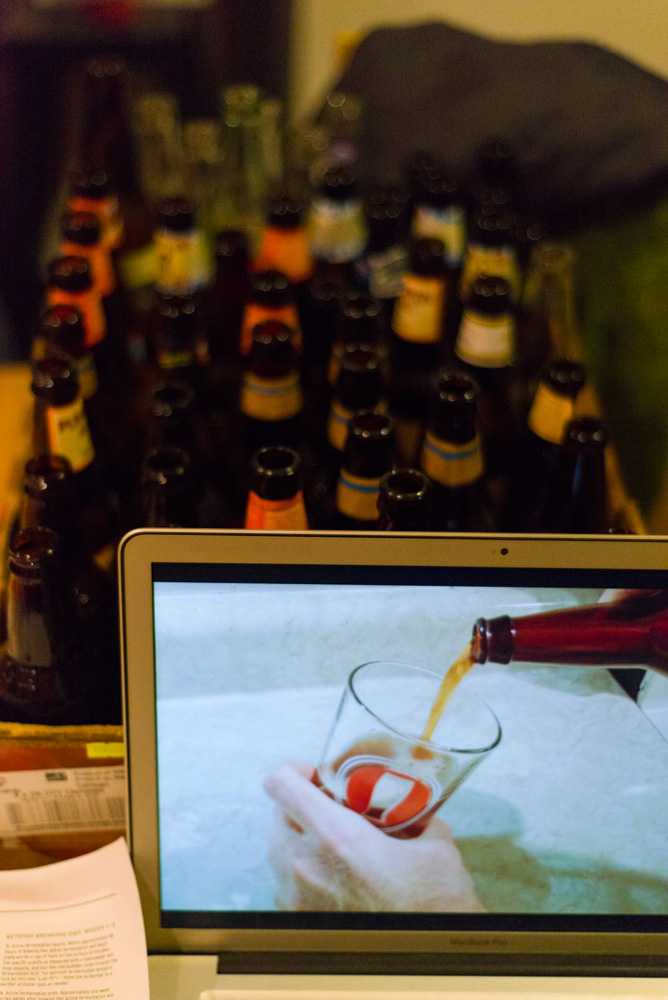Homebrew Update
Previously, I described the first steps of brewing my very own beer. All my ingredients and instructions came from a recipe called Caribou Slobber, a hoppy American brown ale. After fermenting the beer in my basement for about five weeks (the recommended fermentation time, plus a week or two of not getting around to it), it was finally time for the next exciting step: bottling.
I cleaned about forty bottles of various types that I had collected over the last few months:

The Three Philosophers bottles certainly classed up the operation, but I found that the Anchor Steam bottles were the best–they have a lovely, slightly unusual shape and labels that come off very cleanly when washed.
I made a priming solution of table sugar dissolved in boiling water, which I cooled down and added to the fermented beer. This sugar is just additional food for the yeast, who will convert it into alcohol and CO2, carbonating the beer inside the bottles.
I siphoned the beer into my second bucket, in which I had installed a spigot, then filled all the bottles with the help of Enrique, my roommate and co-brewer. We ran out of bottles just before we ran out of beer, but the remainder certainly did not go to waste:

The fermented beer had a specific gravity of 1.020, down from its original gravity of 1.050, giving it an alcohol content of about 4% ABV, right on target.
I then consulted my instructional video about the most important part of the process:

Initial tasting of the beer, right after bottling, was far better than I had expected. The description on the Northern Brewer site was spot-on:
Dense layers of malt, caramel, baking chocolate, and a hint of light-roast coffee give way to reveal a hop character you’ll be surprised to find if you’re used to drinking English brown ale. The finish is complex but balanced, and the gravity is not so high as to keep you from having another.
It’s a hoppy beer, but not overly bitter, and I find it to be a spectacular compromise between the bite of a good ale and the smoothness of a darker beer. More importantly, my roommates all liked it as well!
Update, one week later
After a week of bottle-conditioning, the beer is very nicely carbonated. The flavor is even better now, with the slight extra sweetness from the priming sugar converted to carbonation. It was also a tremendous hit at my Thanksgiving party. The only remaining question is what to brew next.
Robin Deits 27 November 2012